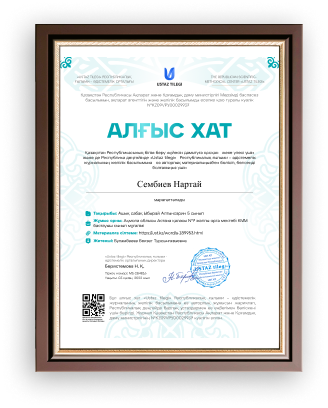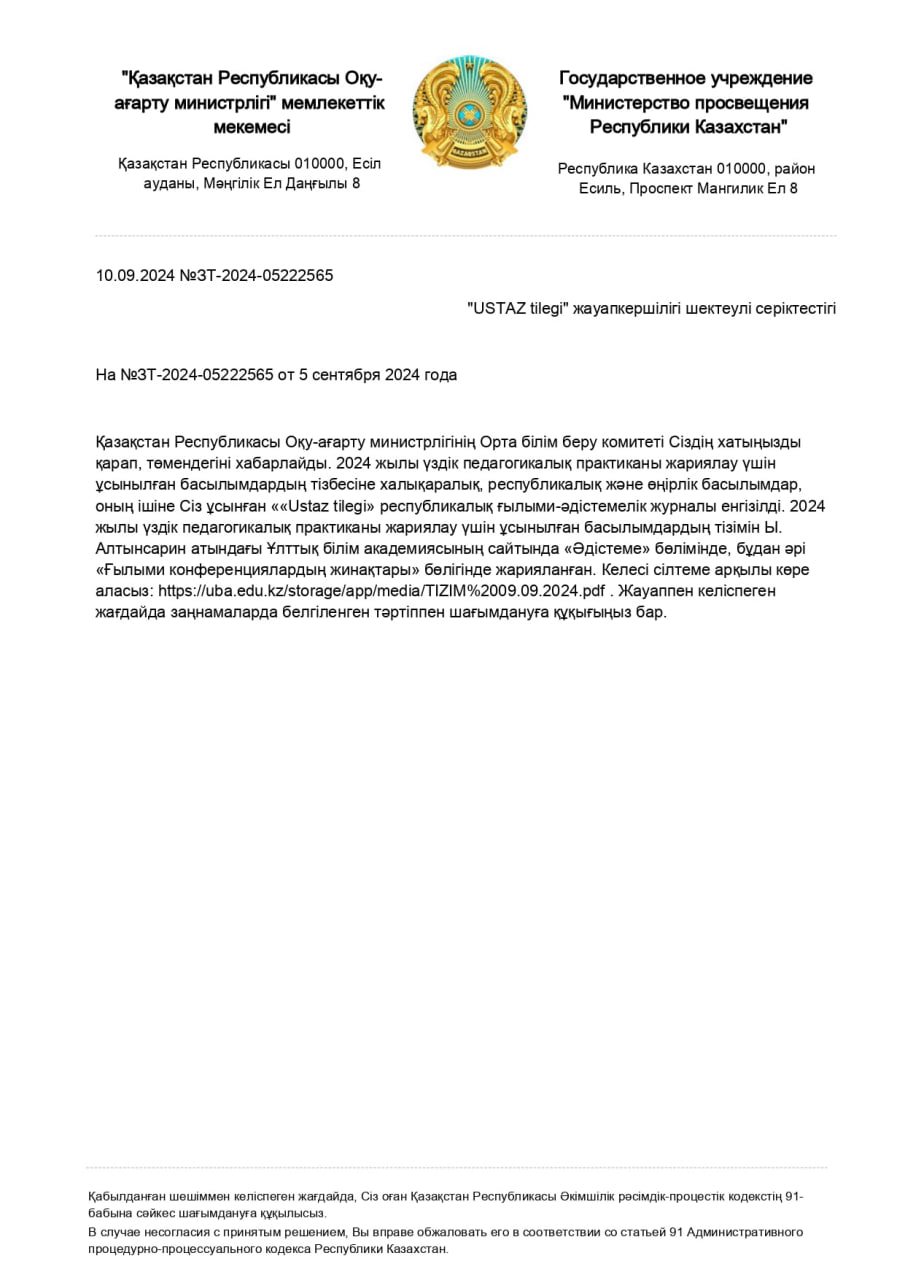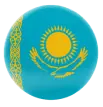Foreign Language Teaching Methodology
Shonaeva Aygerim Asilbek qizi
Student of Alfraganus University aygerimshonaeva@gmail.com
Abstract
This
article examines foreign language teaching methodology as an
independent theoretical and applied science. In an increasingly
globalized world, proficiency in foreign languages is essential for
professional development. This exploration highlights the key
components of effective language instruction, including goals,
principles, methods, and teaching aids.
Keywords
General
methodology, basic concepts, process, goals, content, principles,
methods, techniques, teaching aids, organizational forms of
teaching.
Introduction
In
today's interconnected society, learning a foreign language is not
just an academic pursuit but a vital skill for professional
success. This article provides a comprehensive overview of foreign
language teaching methodology, addressing its significance,
foundational concepts, and practical applications.
Consequently, the school is designed to provide a certain
level of proficiency in a foreign language, which could allow to
continue its study during the period of university and postgraduate
education, as well as independently. The success of training
largely depends on the methodology of a foreign language teacher,
on his ability to use various modern methods in the context of
solving specific educational problems.
The
methodology of teaching foreign languages is a system of knowledge
about the laws of the process of teaching a foreign language and
about ways of influencing this process in order to optimize it. The
methodology of teaching a foreign language reveals and
substantiates the patterns of teaching a foreign
language.
Theoretical Framework
Definition of Foreign Language Teaching
Methodology
Foreign
language teaching methodology refers to the principles and
practices used to teach languages effectively. It encompasses
various approaches, techniques, and tools aimed at developing
language proficiency.
Importance in Education
The
ability to communicate in multiple languages enhances individuals'
employability, cultural competence, and adaptability in diverse
environments. Consequently, language teaching methodologies are
crucial for equipping learners with these competencies.
Key
Components of Foreign Language Teaching Methodology
Goals
The
primary goals of foreign language teaching include:
Developing communicative competence
Fostering intercultural understanding
Preparing learners for real-world language use
Principles
Effective foreign language instruction is grounded in
several key principles:
Learner-Centered Approaches: Prioritizing the needs and
interests of learners.
Contextual Learning: Integrating language skills in
meaningful contexts.
Skill
Integration: Combining listening, speaking, reading, and writing in
instruction.
Methods
Various methods can be employed in language teaching,
including:
Communicative Approach: Emphasizing interaction and
communication.
Task-Based Learning: Focusing on meaningful tasks that
reflect real-life situations.
Lexical
Approach: Highlighting the importance of vocabulary and phrases in
language use.
Techniques
Techniques play a vital role in implementing teaching
methods. Examples include:
Role-Playing: Simulating real-life interactions to build
confidence.
Group
Work: Encouraging collaboration and peer learning.
Multimedia Resources: Utilizing videos, apps, and online
platforms to enhance engagement.
Teaching Aids
Teaching
aids enhance the learning experience by providing resources that
support language acquisition. These may include:
Textbooks: Offering structured content and
exercises.
Digital
Tools: Using apps and online resources for interactive
learning.
Authentic Materials: Incorporating real-world texts,
videos, and audio for practical application.
Organizational Forms of
Teaching
The
organization of language classes can vary, including:
Individual Study: Tailored learning for personal
pacing.
Group
Classes: Promoting interaction and collaboration among
learners.
Online
Learning: Providing flexible options for distance
education.
The
basic concepts that make up the foundation of the methodology
include: process, goals, content, principles, methods, techniques,
means and organizational forms of training.The basic categories of
the technique are considered to be:Method as a system of purposeful
actions of the teacher, on the one hand, and educational actions of
students, on the other.Technique - an elementary methodical act
aimed at solving specific problems at a certain stage of the
lesson. The method is implemented in a system of techniques. The
communication-oriented teaching method is implemented in the
following techniques:
-
Technique of role-based communication
-
Technique of the formation of the approximate ability of
students
-
Techniques for teaching speech interaction
-
Techniques for systematizing speech knowledge
-
Techniques for deepening and expanding content
-
Increasing the intensity of independent work
The
approach is a common starting position, starting from which the
researcher considers most of his other positions.
The principle is the guiding idea. It is customary to single out the
following general didactic, general methodological, particular
methodological principles. K.V. Minyar Beloruchev in his research
identifies the following principles of teaching: the principle of a
differentiated approach, the principle of managing the learning
process, the principle of isolating specific landmarks, the
principle of an integrated approach to motivation in teaching a
foreign language.
The
goal of training is what we strive
for in the process of teaching a foreign language, it is an ideally
planned result [8]. First, the goal of training is set, only then a
methodology is developed. The goal of training is closely related
to the conditions of training, since without them it is impossible
to achieve it. Learning conditions are the circumstances under
which learning takes place.
Moreover, the methodology of teaching foreign languages
opens up opportunities for expanding the base of didactics, the
theoretical provisions of which are developed mainly on the basis
of the study of teaching the basics of science, i.e. in the center
of attention is the cognitive activity of students. The methodology
of teaching foreign languages studies the patterns of communicative
and cognitive
activity
of students. The methodology solves not only the problems of
teaching, but also the problems of upbringing by means of a foreign
language, which is not included in the range of problems studied by
didactics.
Conclusion
Foreign
language teaching methodology is a dynamic field that requires
continuous adaptation to meet the needs of learners in a globalized
world. By understanding its theoretical foundations and practical
applications, educators can enhance language instruction and foster
meaningful communication skills among their students.
Bibliography
1.
Azimbayeva R.Y. Effective methods of working with video materials.
Web of
scientist: International scientific research journal. Vol.
2 No. 04 (2021): WOS. 454p.
2.
Bakirova H.B. Formation of lexical skills in learning foreign
language terminology in a non-language university/ Emergent:
journal of educational discoveries and lifelong learning (EJEDL)
ISSN 2776-0995 Vol. 2, Issue 5, 2021, Indonesia.
3.
Bakirova H.B. (2021) "Development of lexical competence based on
content - based approach in ESP teaching, "Mental Enlightenment
Scientific-Methodological
Journal.
4. Bim
I.L. Methods of teaching foreign languages as a science and
problems of a
school
textbook. - M.: Russian language, 1977.
5.
Passov E.I., Kuznetsova E.S., Formation of lexical skills,
Voronezh: Interlingua,
2002 -
40 p.


















